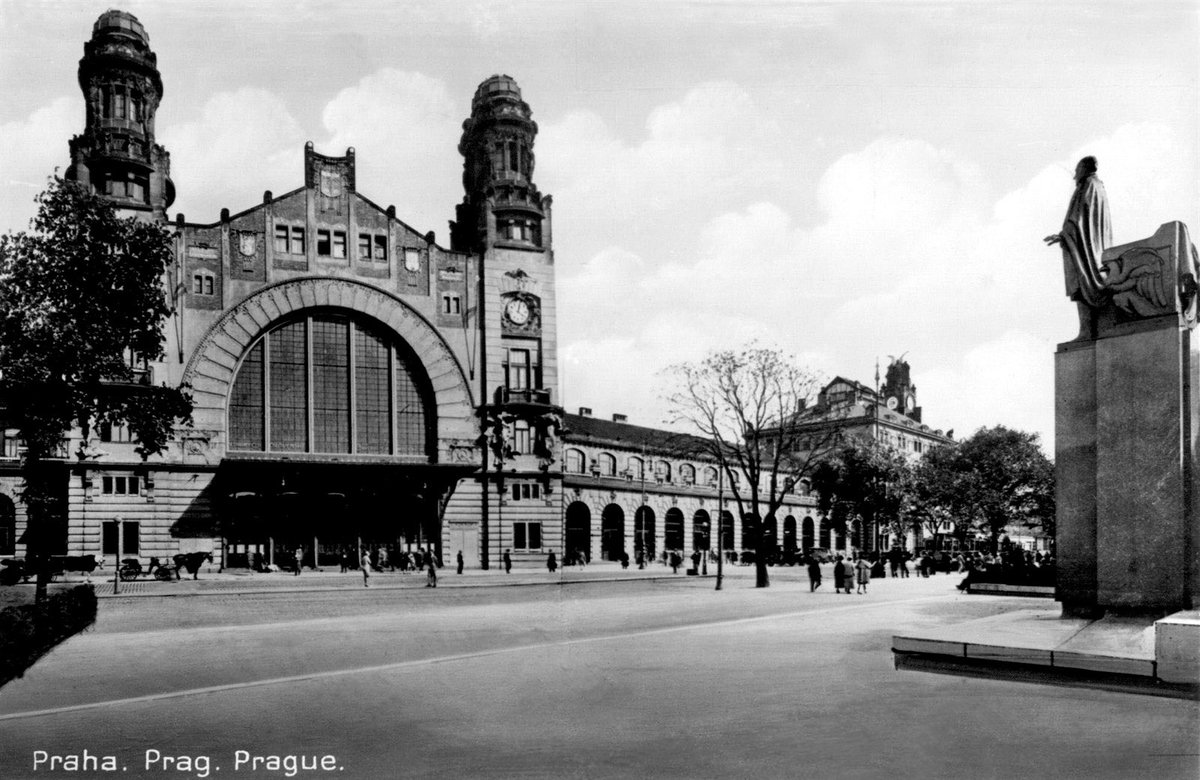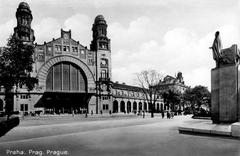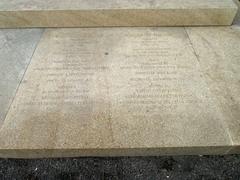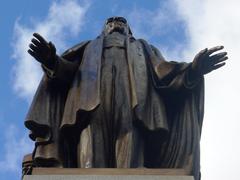
Wilson Statue Visiting Hours, Tickets, and Guide to Vrchlického Sady: Discover Prague’s Historic Sites
Date: 14/06/2025
Introduction
The Woodrow Wilson Statue in Vrchlického Sady, Prague, stands as a powerful symbol of Czech-American friendship, democracy, and resilience. This monumental bronze figure commemorates U.S. President Woodrow Wilson’s crucial support for Czechoslovak independence after World War I and anchors the city’s historical memory in a tranquil urban park adjacent to Prague’s main railway station. In this comprehensive guide, you’ll find the statue’s historical background, practical visiting information, accessibility details, nearby attractions, travel tips, and answers to common visitor questions—all designed to ensure an enriching experience at one of Prague’s most meaningful monuments (Radio Prague International; Fox News; Mutual Inspirations; Pragitecture).
Table of Contents
- Historical Overview: The Woodrow Wilson Statue
- Destruction and Restoration
- Visiting Information: Hours, Tickets, and Accessibility
- Exploring Vrchlického Sady Park
- Nearby Attractions and Travel Tips
- Cultural Significance and Events
- Frequently Asked Questions (FAQ)
- Conclusion and Visitor Tips
- References
Historical Overview: The Woodrow Wilson Statue
Origins and Symbolism
After the First World War, President Woodrow Wilson’s Fourteen Points—especially his endorsement of national self-determination—helped pave the way for the creation of Czechoslovakia in 1918. Grateful for this diplomatic support, Americans of Czech and Slovak descent funded a statue of Wilson, which was sculpted by Czech-American artist Albín Polášek and architect Bohumil Hübschmann (Fox News; Bunk History).
Unveiled on July 4, 1928, near the main railway station (then called Wilson Station), the 3-meter-high bronze statue depicted Wilson at the Versailles Peace Conference, hands raised in a gesture symbolizing blessing and peace. The pedestal bore the phrase, “The world must be made safe for democracy,” in both English and Czech—a direct nod to Wilson’s 1917 speech (Radio Prague International).
Destruction and Restoration
World War II and the Communist Era
During the Nazi occupation in 1941, the statue was destroyed as part of a campaign to erase symbols of Czech independence. The site was further altered during the 1970s with railway expansions and political changes. Under communist rule, Wilson’s legacy was suppressed, but local memory of his support for Czechoslovakia persisted (Our Beautiful Prague).
Restoration and Rededication
After the Velvet Revolution, efforts led by the American Friends of the Czech Republic resulted in the statue’s faithful recreation. It was rededicated in 2011 near its original location, with dignitaries from both nations present, including presidents, ambassadors, and former Secretary of State Madeleine Albright (Pragitecture; Mutual Inspirations).
The restored monument stands as a testament to democracy, international cooperation, and gratitude between nations.
Visiting Information: Hours, Tickets, and Accessibility
Location: Vrchlického Sady Park, adjacent to Prague Main Railway Station (Praha hlavní nádraží), near the intersection of Jeruzalémská and Opletalova streets.
Coordinates: 50°5’1.962” N, 14°25’59.191” E (Tripomatic).
How to Get There
- By Metro: Hlavní nádraží (Line C, red line), exits directly to the park and statue.
- By Tram: Lines 5, 9, 15, 26 (daytime) and 95, 98 (night) stop at Hlavní nádraží.
- By Bus: Bus 135 serves Hlavní nádraží stop.
- On Foot: 10–15 minutes from Wenceslas Square.
Visiting Hours & Tickets
- Access: The statue is outdoors and accessible 24/7, year-round.
- Tickets: No tickets or reservations required—admission is free.
Accessibility
- Wheelchair Access: Paved, mostly flat park paths suitable for wheelchairs and strollers.
- Public Transport: Step-free access at Hlavní nádraží metro and newer trams.
- Restrooms: Available inside the main railway station, including accessible facilities.
- Visitor Tips: For safety and the best experience, visit during daylight hours (7:00 AM–7:00 PM).
Exploring Vrchlického Sady Park
Vrchlického Sady is an urban green space stretching in front of the main railway station, providing a peaceful setting for the Wilson Statue. Designed with tree-lined avenues, open lawns, and a network of paved paths, the park offers:
- Children’s Playgrounds: Popular with families in the afternoons and weekends.
- Cafés/Kiosks: Seasonal refreshments, coffee, and snacks.
- Benches: Shaded spots for rest and people-watching.
- Public Art: Occasional temporary installations and cultural events (expats.cz; viewfromprague.com).
Safety: The park is generally safe during the day, but caution is advised after dark due to transient populations.
Nearby Attractions and Travel Tips
- Wenceslas Square: Historic boulevard with shops, restaurants, and the National Museum.
- National Museum: Major exhibit halls at the top of Wenceslas Square.
- State Opera: Renowned for architecture and performances.
- Franciscan Garden: Tranquil spot between Wenceslas Square and Jungmannovo náměstí.
- Other Parks: Letná Park, Riegrovy Sady, and Petřín Hill (viewfromprague.com).
Photography: The monument is best photographed during golden hour with the railway station as a backdrop.
Guided Tours: The Wilson Statue is included in many walking tours focused on modern history, American-Czech relations, and urban culture (Prague Experience).
Cultural Significance and Events
The Wilson Statue is a focal point for public commemorations, including Czech Independence Day (October 28) and the statue’s unveiling anniversary (October 5). “Wilson Week” celebrations and educational events are sometimes held here, highlighting the monument’s role in democracy and Czech-American friendship (Wikipedia).
Frequently Asked Questions (FAQ)
Q: What are the visiting hours for the Wilson Statue?
A: The statue is accessible 24/7, but daylight hours are recommended for safety.
Q: Is there an entrance fee or ticket required?
A: No, the statue is free to visit.
Q: Is the Wilson Statue wheelchair accessible?
A: Yes, the park paths are paved and accessible.
Q: How do I get there by public transport?
A: Use metro Line C (Hlavní nádraží), or tram lines 5, 9, 15, 26.
Q: Are guided tours available?
A: Yes, many Prague walking tours include the statue and park.
Q: Can I take photos?
A: Yes, photography is unrestricted.
Conclusion and Visitor Tips
The Woodrow Wilson Statue in Vrchlického Sady is not just a monument—it is a living symbol of the Czech Republic’s modern history, the struggle for democracy, and enduring ties with the United States. Its story of destruction, erasure, and restoration mirrors Prague’s resilience through the 20th century. Whether you’re a history enthusiast, a casual traveler, or a local, a visit to the Wilson Statue provides an opportunity to reflect on the values of freedom and international solidarity.
Visitor Tips:
- Visit in the morning or afternoon for the best light and fewest crowds.
- Pair your visit with a stroll through Wenceslas Square and the National Museum.
- Stay aware of your surroundings, especially after dark.
- Download the Audiala app for audio guides and insider tips on Prague’s landmarks.
- Respect the monument and park environment.
For a deeper exploration of Prague’s historical and cultural sites, check out our related articles and travel resources.
Image credit: Wikimedia Commons


























































































































































































